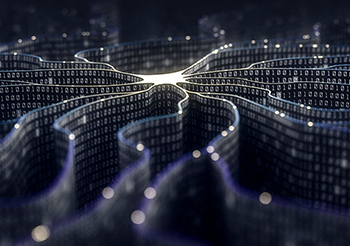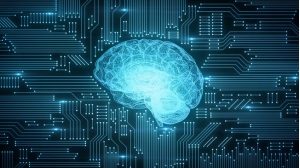
Artificial Intelligence (AI) and machine learning (ML) are the hottest trends in the industry today. More businesses and companies turn to AI and machine learning to solve problems that don’t have an obvious solution. These two are such advanced technologies that hold the potential to present diverse cutting-edge solutions for businesses.
 Artificial intelligence, machine learning, and neural networks are industry buzz words used to define the sophisticated computer technology that is becoming widely used to understand and improve businesses and customer experiences. I assume you must have heard of it before, but the way it is defined today is – an area of computer science that emphasizes the creation of intelligent machines that work and react like humans.
Artificial intelligence, machine learning, and neural networks are industry buzz words used to define the sophisticated computer technology that is becoming widely used to understand and improve businesses and customer experiences. I assume you must have heard of it before, but the way it is defined today is – an area of computer science that emphasizes the creation of intelligent machines that work and react like humans.
Artificial Intelligence offers great potential as well as significant risks for humans in the future. While still in its infancy, it is already being employed in some interesting ways.
Let’s focus on the top 5 trends that would dominate 2020-21
1. Business Forecasting and Analysis
The time series analysis has been popular from past few years and is still a leading trend for the current year. With this technique, analysts collect and monitor a set of data over time which is analysed and used to make smart business decisions. The ML networks can give forecasts with accuracy as high as around 95 %, if trained using diverse data sets.
In 2021 and beyond, we can expect companies to incorporate recurrent neural networks for high-fidelity forecasting. For instance, machine learning solutions can be implemented to identify hidden patterns and accurate forecasts. A real-world example of this is insurance firms detecting possible frauds that could otherwise prove costly to them.
2. AI and the Healthcare Domain
The healthcare industry has greatly benefited from the advancement of AI technology over the years. AI development companies have created multiple solutions to enhance the capabilities and capacities of healthcare firms.
 The recent outbreak of COVID was mitigated by the integration of AI and Big Data used to identify COVID patients and potential hot spots. Thermal cameras and smartphone apps were used for monitoring the temperature of individuals and pool data for healthcare authorities.
The recent outbreak of COVID was mitigated by the integration of AI and Big Data used to identify COVID patients and potential hot spots. Thermal cameras and smartphone apps were used for monitoring the temperature of individuals and pool data for healthcare authorities.
AI and ML can can further show the way to the healthcare industry in many possible ways. Using data analysis and prediction capabilities of AI and ML tools, authorities are gaining insights into individual’s medical records for taking necessary preventive measures. A familiar use case is smart AI watches that monitor a patient’s vitals keeping a track on their health remotely.
3. Reinforcement Learning (Deep Learning)
Reinforced Learning (RL) can be utilized to a large extent by organizations in the coming years. It is a special application of deep learning that uses its own experiences to improve captured data effectiveness.
 In reinforcement learning, the AI software is set up with a number of conditions that define the software’s type of action. Based on these activities and results, the software auto-learns actions to meet the desired goal.
In reinforcement learning, the AI software is set up with a number of conditions that define the software’s type of action. Based on these activities and results, the software auto-learns actions to meet the desired goal.
An ideal example of reinforcement learning is a chatbot that addresses simple user queries like order booking, greeting, or consultation calls. Machine Learning Development Companies can use RL to make the chatbot more resourceful by adding sequential conditions to it – such as identifying sales leads and transferring calls to the relevant service agent.
4. Conversational AI for Automated Messaging
Conversational AI is the technology on which automated messaging and speech-based applications work. It can be used to communicate like a human by understanding customer’s intent, acknowledging speech and text, deciphering different languages, and giving responses similar to the way humans do. Chatbots and smart assistants like Amazon Echo and Google Home are the examples of conversational AI devices.
 However, there are a lot of areas where improvements can be addressed by application developers. Speech recognition and automated text recognition are two such challenges that require excellent command over natural language processing. These limitations can be overcome in various ways. One way would be to make classification/segmentation of diverse words (e.g., enabling simple words to make an order at a food restaurant application).
However, there are a lot of areas where improvements can be addressed by application developers. Speech recognition and automated text recognition are two such challenges that require excellent command over natural language processing. These limitations can be overcome in various ways. One way would be to make classification/segmentation of diverse words (e.g., enabling simple words to make an order at a food restaurant application).
5. Predictive Maintenance Using Artificial Intelligence IoT
Internet of Things (IoT) apps used for managing interconnected devices have found their use in several places, including organizations, homes, and enterprises. The capabilities of IoT devices can be increased when used with AI and ML. By leveraging AI and IoT (know as artificial intelligence of things, or AIoT) technologies in software and customer relationship management (CRM), businesses can get real-time information and monitor various interconnected devices’ performance. These smart solutions can be used for predictive maintenance in industrial machines and can address problems both on-site and remotely.
An example of this would be the AI applications that allow field agents to find faulty machines with image recognition features embedded in Field Service applications. With predictive maintenance and defect detection, businesses can get proactive solutions to their prevalent problems in no time.
These AI predictions for 2021 are likely to become a reality. In this day and age, powerful tools such as AI and machine learning cannot be overlooked in any industry. When used correctly, AI can tackle any problem no matter how big or small!
 Interesting ways we think AI and machine learning will transform five critical industries in 2020-21
Interesting ways we think AI and machine learning will transform five critical industries in 2020-21
Healthcare: Through the development and deployment of AI-infused medical systems, the healthcare industry of the near future will deliver personalized medical care to all their patients.
Travel, transportation & hospitality: The transportation industry is on the verge of being disrupted by another AI-based technology — self-driving or autonomous vehicles.
Manufacturing: With AI-based intelligent systems, manufacturers of all sizes could extend tailored services to all of their customers, including the smallest companies.
Banking: With AI and machine learning, financial institutions could provide personal services to all their customers.
Insurance: Artificial Intelligence can be deployed by Insurance companies to correlate various types of actuarial information, driving history, etc., to collect information and gain insights about their customers and offer them customized services.

Think Futuristic!
Overall, artificial intelligence and machine learning can redefine and reshape the way we live and work. The growing trend we should all expect is to see more and more AI-enabled solutions in the workplace. These technologies will help create new user experiences, better outcomes, and ensure we achieve our goals in a timely and efficient fashion.
When thinking about the needs of the hybrid workforce, companies need to decide if simple task-based automation tools are the answer to their problems or require a mix of AI and other transformative technologies to achieve cognitive automation and real intelligence.
The choice remains — will your organization be a leader in enabling successful and sustainable digitization powered by AI, or will you stay still and stagnant because of the fear of change.
In conclusion, we can say AI and machine learning are fancy technologies that will have a positive impact on education, human resources, security, poverty eradication, health, and science. The possibilities for business improvement resulting from AI and ML trends will only continue to expand in 2021 exponentially.